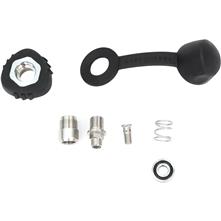- Messages
- 1,860
- Reaction score
- 102
If it's a HP tank with a 300 bar valve, there is not a converter to make it yoke. IT IS A HP tank, 3442 tanks usually have a convertable 200 bar valve that can be used yoke or din. In my opinion, either valve works fine and dandy as long as you take proper care and use them without abusing them. I've seen divers manage to mangle up both yoke and din and swear it wasn't their fault(it never is). The biggie is, go with yoke or go with din for your personal takes. I would not suggest going with a mixture.




